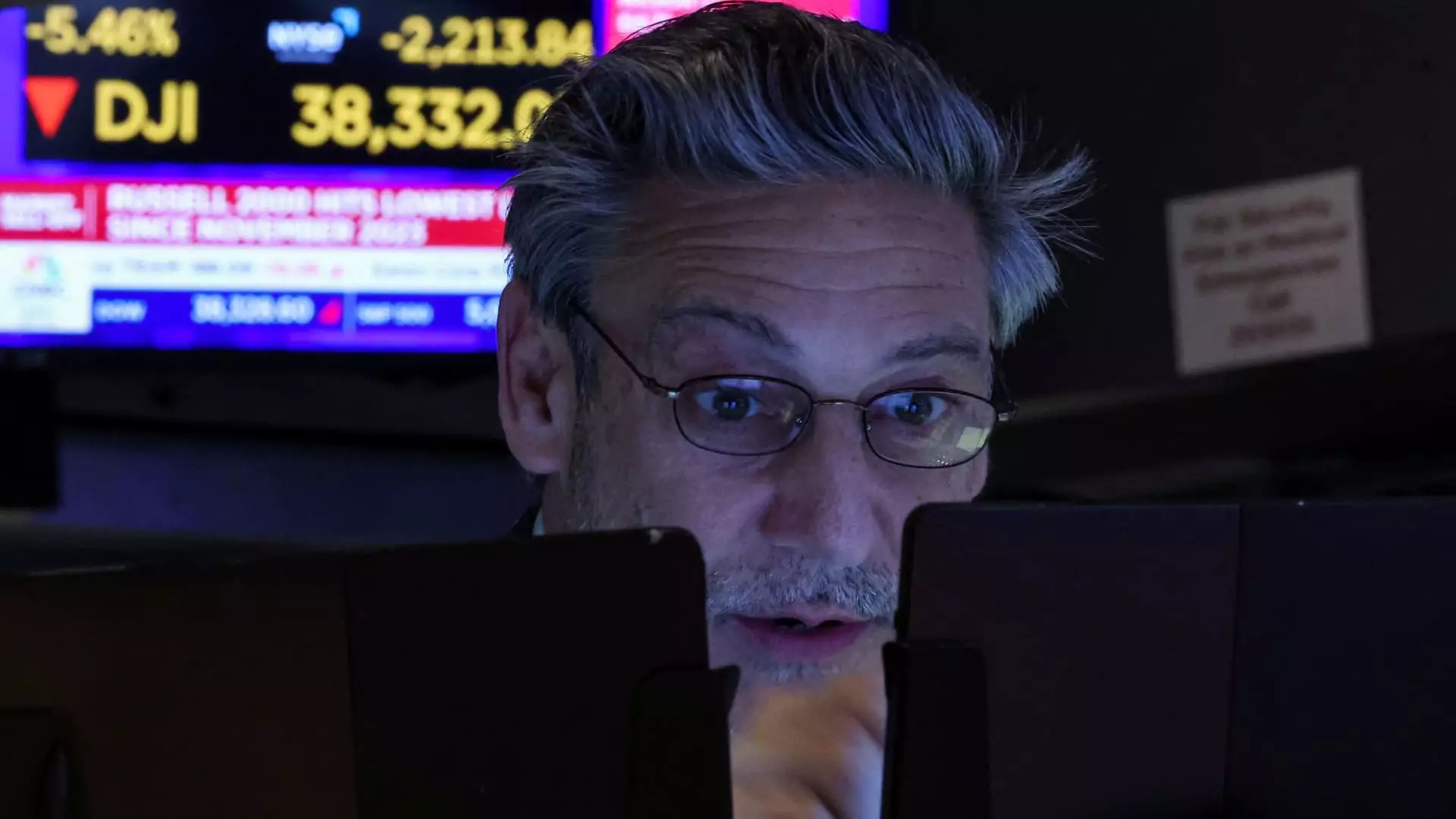In recent weeks, the stock market has been teetering on the edge, with fluctuations reminiscent of the chaotic months during the onset of the COVID-19 pandemic. The alarming aspect of this turmoil is not just the numbers; it’s the psychology behind them. The fear and uncertainty fueling these shifts are palpable, revealing a market that is far too sensitive to external influences. The rapid sell-offs we are witnessing seem driven by a surge in panic rather than rational analysis, indicating a deeply rooted issue in both investor sentiment and market structure.
The Trading Halts: A Necessary Evil?
Trading halts are intended to stabilize the market, providing traders a moment to gather their thoughts and strategize in times of upheaval. Yet, they beg a crucial question: Do they genuinely serve their purpose, or do they merely act as band-aids on a deeper wound? When the market tumbles like it did on that woeful Friday, traders and analysts alike are suddenly forced to rethink their positions, evaluate the implications of an immediate downturn, and recalibrate their strategies—all in a matter of minutes. While these pauses may prevent complete freefall, they can breed uncertainty and deepen the emotional toll on investors, prompting more extreme reactions instead of fostering calm.
The Circuit Breakers: A Double-Edged Sword
The recent declines have triggered discussions around market circuit breakers—a mechanism introduced to halt trading when indices plunge. However, one cannot help but question their effectiveness. These thresholds (7%, 13%, and 20% drops) can feel arbitrary when the market is built to respond to sentiment over substance. During times of distress, as seen with the S&P plummeting nearly 6% in one session, these predetermined levels may seem more like stumbling blocks than safety nets. When we consider that such significant drops are rare yet occurring more frequently, it signals an urgent need for reevaluation of the rules governing our markets. It’s almost ironic; the very systems intended to stabilize the markets may inadvertently amplify the anxieties stemming from sharp declines.
The Impact of Global Politics on Market Stability
A potent cocktail of politics and the economy is further stoking these volatile flames. The recent implementation of surprisingly high tariffs under the Trump administration has escalated uncertainty within global trade dynamics. Investors today are not just reacting to numbers but to global headlines that often feel disconnected from the realities of everyday financial transactions. Such high-stakes game-playing on the geopolitical stage adds an additional layer of complexity, intensifying the market’s nervosity. This volatile interplay poses a clear threat—not just to profitability but to the very fabric of economic stability.
Understanding the Emotional Toll on Investors
It’s essential to recognize that we are not merely talking about numbers on a graph when we discuss the stock market; we are deliberating on lives, futures, and dreams. Each percentage drop corresponds to real investments and experiences. The overwhelming majority of retail investors lack the resources of institutional players to weather these tumultuous times. Increased volatility leads to an emotionally charged environment where fear often outweighs reason, blue-chip investments are sold in haste, and long-term strategies are thrown out of the window. The erosion of investor confidence can inflict irreparable harm, causing a rift in the fundamental trust in markets.
The Future: A Market on the Brink
With the benchmark indices now showing heightened sensitivity to global influences, and with the S&P teetering precariously far from its all-time high, we have to ask ourselves—what’s next? If the drops become the norm rather than the exception, the consequences will ripple through our economy. Retail investors may withdraw, institutions may rethink their strategies, and in a worst-case scenario, prolonged instability could lead to a significant market correction. The mounting pessimism can only serve to obstruct our journey toward recovery.
While the existing mechanisms for stability may be deemed necessary by some, their current efficacy in addressing the underlying problems seems sorely lacking. As the emotional and financial stakes climb higher, Wall Street must engage in an honest discourse about the systems in place and how they can be improved to better serve a market fraught with anxiety, uncertainty, and unforeseen crisis.

